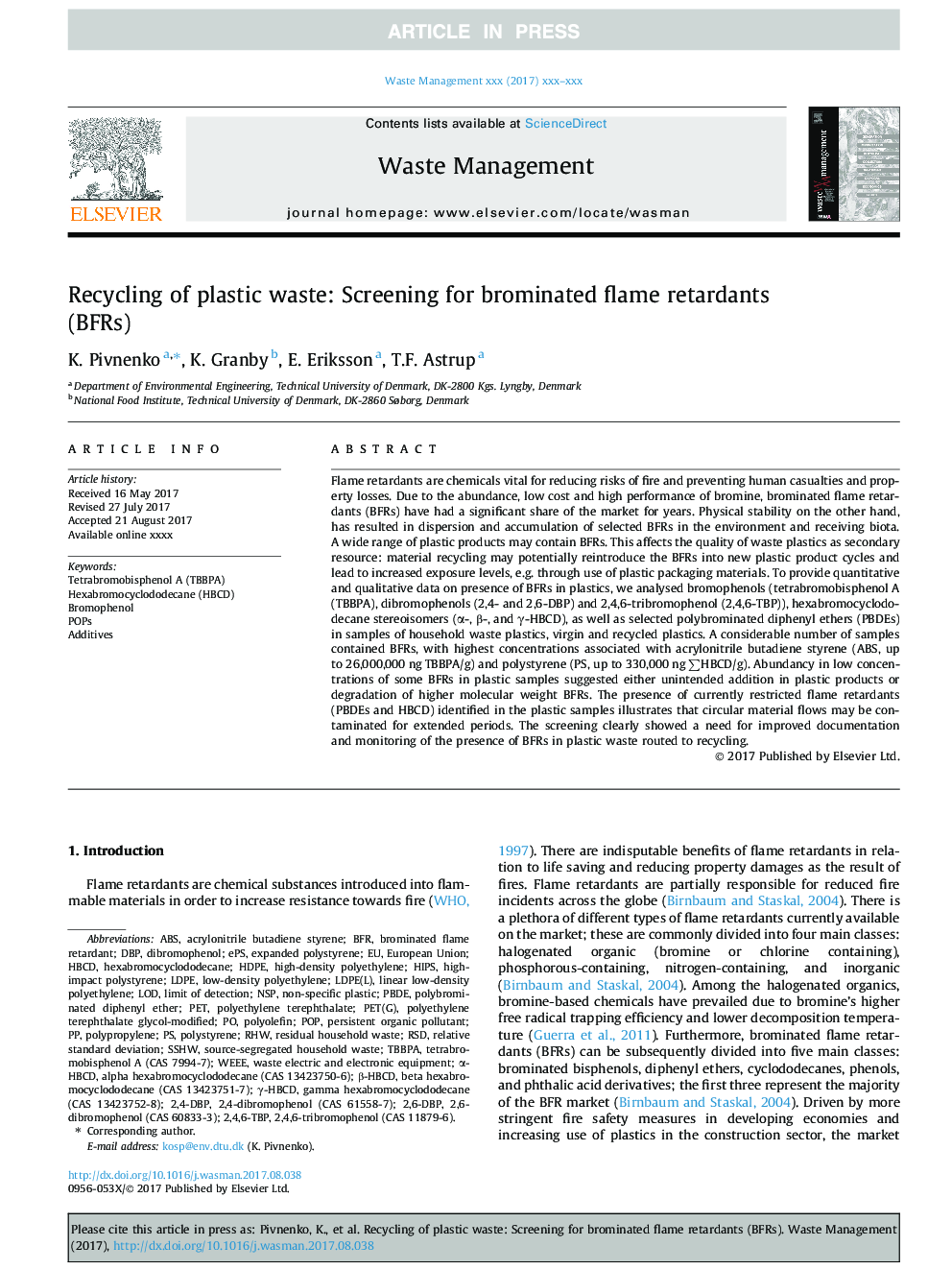| Article ID | Journal | Published Year | Pages | File Type |
|---|---|---|---|---|
| 8870348 | Waste Management | 2017 | 9 Pages |
Abstract
Flame retardants are chemicals vital for reducing risks of fire and preventing human casualties and property losses. Due to the abundance, low cost and high performance of bromine, brominated flame retardants (BFRs) have had a significant share of the market for years. Physical stability on the other hand, has resulted in dispersion and accumulation of selected BFRs in the environment and receiving biota. A wide range of plastic products may contain BFRs. This affects the quality of waste plastics as secondary resource: material recycling may potentially reintroduce the BFRs into new plastic product cycles and lead to increased exposure levels, e.g. through use of plastic packaging materials. To provide quantitative and qualitative data on presence of BFRs in plastics, we analysed bromophenols (tetrabromobisphenol A (TBBPA), dibromophenols (2,4- and 2,6-DBP) and 2,4,6-tribromophenol (2,4,6-TBP)), hexabromocyclododecane stereoisomers (α-, β-, and γ-HBCD), as well as selected polybrominated diphenyl ethers (PBDEs) in samples of household waste plastics, virgin and recycled plastics. A considerable number of samples contained BFRs, with highest concentrations associated with acrylonitrile butadiene styrene (ABS, up to 26,000,000 ng TBBPA/g) and polystyrene (PS, up to 330,000 ng âHBCD/g). Abundancy in low concentrations of some BFRs in plastic samples suggested either unintended addition in plastic products or degradation of higher molecular weight BFRs. The presence of currently restricted flame retardants (PBDEs and HBCD) identified in the plastic samples illustrates that circular material flows may be contaminated for extended periods. The screening clearly showed a need for improved documentation and monitoring of the presence of BFRs in plastic waste routed to recycling.
Keywords
ABSHBCDNSPLDPEPBDEWEEEDBPEPSTBBPABFRHDPEHexabromocyclododecane (HBCD)Tetrabromobisphenol A (TBBPA)HIPS2,4,6-TBPRSDPersistent organic pollutantPOPsEuropean Unionacrylonitrile butadiene styreneAdditivesrelative standard deviationbrominated flame retardantBromophenolWaste electric and electronic equipmentLOD یا Limit of detectionLinear low-density polyethylenePolybrominated diphenyl etherlimit of detectionHexabromocyclododecanepopPETHigh-density polyethylenePolyethylene terephthalateLow-density polyethyleneExpanded polystyreneHigh-impact polystyrenePolyolefinPolypropylenePolystyrene
Related Topics
Physical Sciences and Engineering
Earth and Planetary Sciences
Geotechnical Engineering and Engineering Geology
Authors
K. Pivnenko, K. Granby, E. Eriksson, T.F. Astrup,
